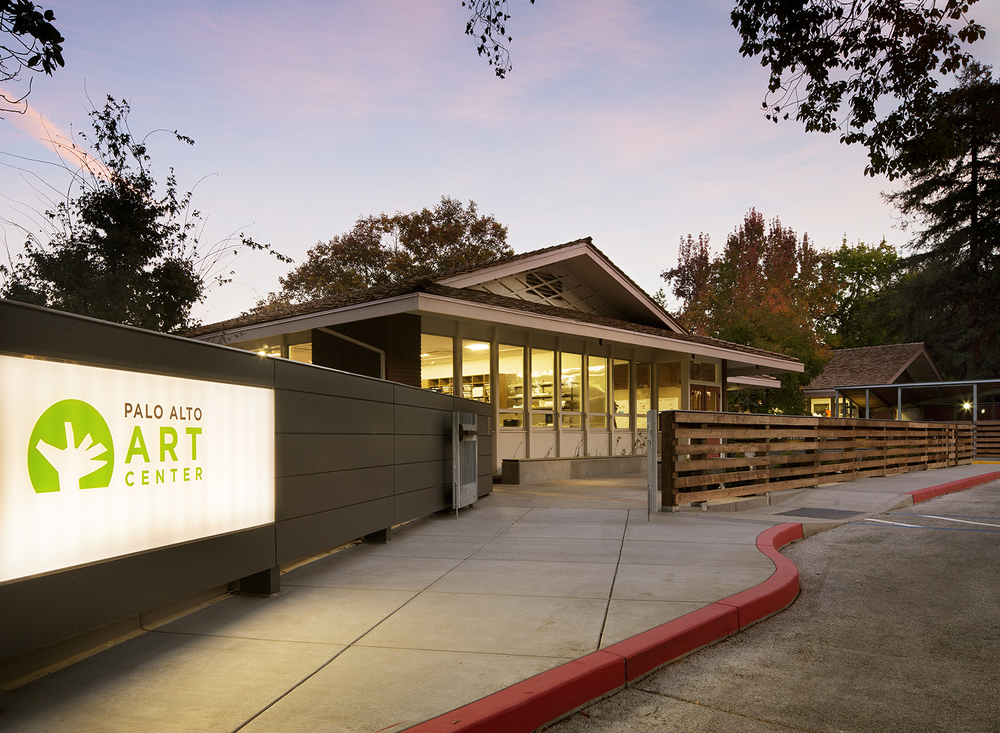By Mardi Maxwell
What does it take for museums to engage senior audiences? And how should they go about developing and sustaining this relationship? With community research through John F. Kennedy University’s Museum Studies program, we are now one step closer to having answers to these questions.
In spring of 2015, graduate students, Betsy Ringrose, Christina Samore and Mardi Maxwell embarked on Professor Margaret Kadoyama’s two-part communities assignment on behalf of the Palo Alto Art Center. The students were charged to:
- Research the Palo Alto senior community and create a community profile.
- Create a community involvement action plan that involved the senior community with the Palo Alto Art Center (PAAC).
Both the process and the outcomes of this community research produced some surprising results about today’s seniors and museum engagement.

Why the Senior Community?
PAAC is smart to notice that their local senior population is rapidly expanding. Already 17.1% of Palo Alto’s population is over the age of 65, which represents over 11,000 seniors within the city borders (Bay Area Census, 2015).
Because it is the people that give museums their purpose, museums worldwide are now paying attention to changing demographics. “In the next two decades, the number of 65 and older in the United States will double to more than 70 million” (Culture Connects All, 2011).
Fortunately, The Art Center has resources that can help older adults become connected in meaningful ways as valuable members of the PAAC community.
Ultimately, by engaging with senior populations, PAAC and other museums can increase attendance, revenues, and donor relations while simultaneously providing valuable services and expanding the reach of their mission.
Creating a Community Profile of the Senior Audience
Creating this community profile began by deeply understanding the Palo Alto senior audience. The students interviewed residents and/or directors at five Palo Alto retirement communities and the local senior center. The breadth of research included seniors with various income levels, and multi-cultural communities.
Needs, Interests & Challenges
Results showed that regardless of financial resources or demographics, the basic needs, concerns, interests and challenges of seniors were consistent in all five senior communities.
- Palo Alto seniors focus on health, wellness, nutrition, housing, transportation and entertainment.
- Palo Alto seniors have busy schedules revolving around medical appointments and an endless array of recreational opportunities.
- Palo Alto seniors manage diverse capacities of hearing, vision, mobility and stamina.
- Palo Alto seniors are concerned about physical comfort.
- Palo Alto seniors are challenged to sustain a healthy, mobile and independent lifestyle.
- Palo Alto seniors consider themselves capable, active, and lifelong learners.
- Palo Alto seniors view their local senior center’s services and programs as a vital asset in the senior community.
A Highly Personal but Low-Tech Approach
Research established that engaging today’s seniors requires a highly personal, but low-tech approach. Seniors still get most community event information via low tech or personal modes such as program directors, resident associations, and posters on community bulletin boards, the local newspapers or in their mailbox. They enjoy the personal touch of a curator visiting their community to give a lecture. This makes them more likely to consider touring an exhibition.
Overcoming Barriers
Museums can expect that barriers for senior engagement will include costs or competitive class fees, transportation, awareness, interest, comfort, language and scheduling. With so many leisure options, seniors weigh museum offerings against other institutions and look for unique programs. And it should be noted that many seniors meet “art making” with resistance.
With this deepened understanding of the Senior Audience of Palo Alto, and the interests, needs and concerns of community, the museum and their partners can effectively turn their attention towards creating a community action plan specific to this audience.
(To be continued)
References:
- Culture Connects All: Rethinking Audiences at Times of Demographic Change, Partners for Livable Communities (2011), Washington, DC. Retrieved from: https://www.giarts.org/sites/default/files/Culture-Connects-All_Rethinking-Audiences-in-Times-of-Demographic-Change.pdf
- Bay Area Census (2015). City of Palo Alto. Retrieved May 18, 2015 from: http://www.bayareacensus.ca.gov/cities/PaloAlto.htm
- Palo Alto Art Center
Mardi Maxwell is a second year graduate student at John F. Kennedy University in Berkeley, CA. She is currently pursuing a MA degree with a dual focus in Education and Collections. Museum affiliations include San Jose Museum of Art, Triton Museum of Art, and Oakland Museum of Aviation.








Add new comment